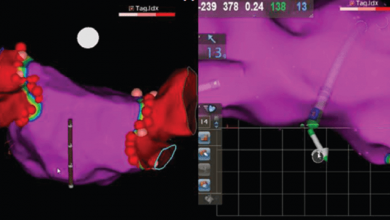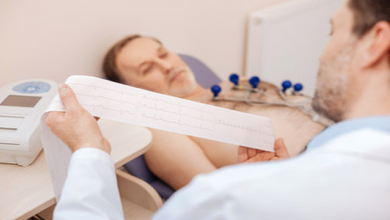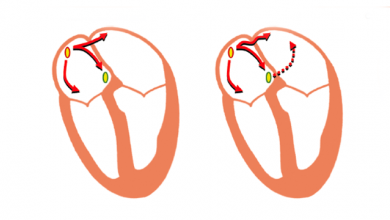Search results
Author(s):
Konstantinos C Siontis
,
Hakan Oral
Added:
3 years ago
Advanced catheter-based technologies employed for the ablation of symptomatic atrial fibrillation (AF) have revolutionised the management of this common sustained arrhythmia. In the late 1990s, premature depolarisations originating from the myocardial sleeves within the pulmonary veins were recognised to initiate AF. This landmark discovery rendered pulmonary vein isolation (PVI) as the…
View more
Zero X-ray Ablation
Author(s):
Giuseppe Mascia
,
Marzia Giaccardi
Added:
3 years ago
Article
Ventricular Tachycardia Isthmus
Author(s):
Ruairidh Martin
,
Meleze Hocini
,
Michel Haissaguerre
,
et al
Added:
3 years ago
Article
Author(s):
Caroline H Roney
,
Andrew L Wit
,
Nicholas S Peters
Added:
3 years ago
Determining optimal treatment strategies for complex arrhythmogenesis in AF is confounded by the lack of consensus on the mechanisms causing AF. Fundamental to defining arrhythmogenic mechanisms of AF are the distinctions and interplay between functional features (determined by the electrophysiology of a cell) and structural features (determined by whether a structural or anatomical feature is…
View more
Author(s):
Henry Chubb
,
Mark O’Neill
,
Eric Rosenthal
Added:
3 years ago
Device therapy is increasingly employed in the management of complex congenital heart disease (CHD). Bradycardias, most often related to sinus nodal dysfunction (SND) or atrioventricular nodal (AVN) block, may necessitate the implantation of pacing devices, while malignant arrhythmias may be treated by appropriate use of implantable cardioverter defibrillators (ICDs). However, there is a complex…
View more
Presented at EHRA 2021
Author(s):
A John Camm
,
Hugh Calkins
,
Claudio Tondo
Start date:
Apr 24, 2021
Broadcast
Author(s):
David Schaack
,
Boris Schmidt
,
Shota Tohoku
,
et al
Added:
1 year ago
Value of Sinus Rhythm Mapping
Author(s):
Mathijs S van Schie
,
Natasja MS de Groot
Added:
1 year ago
Article
Author(s):
Zhao Liu
,
J Kevin Donahue
Added:
3 years ago
In the United States, atrial fibrillation (AF) is the most common sustained cardiac arrhythmia affecting approximately six million patients and contributing to a greatly increased risk of stroke, heart failure (HF) and overall morbidity and mortality.1,2 The prevalence of AF is increasing as the average age of the population increases.3,4
Currently available therapies for AF are suboptimal…
View more
Author(s):
Marius Andronache
,
Nikola Drca
,
Graziana Viola
Added:
3 years ago
AF is the most common sustained cardiac arrhythmia in clinical practice. It is associated with increased risk of stroke and heart failure (HF), and is a significant global health challenge.1 Catheter ablation procedures, which isolate the pulmonary veins (PV) from the left atrium and prevent AF initiation, are effective and safe treatment options, and have emerged as the preferred rhythm control…
View more















 « First
« First